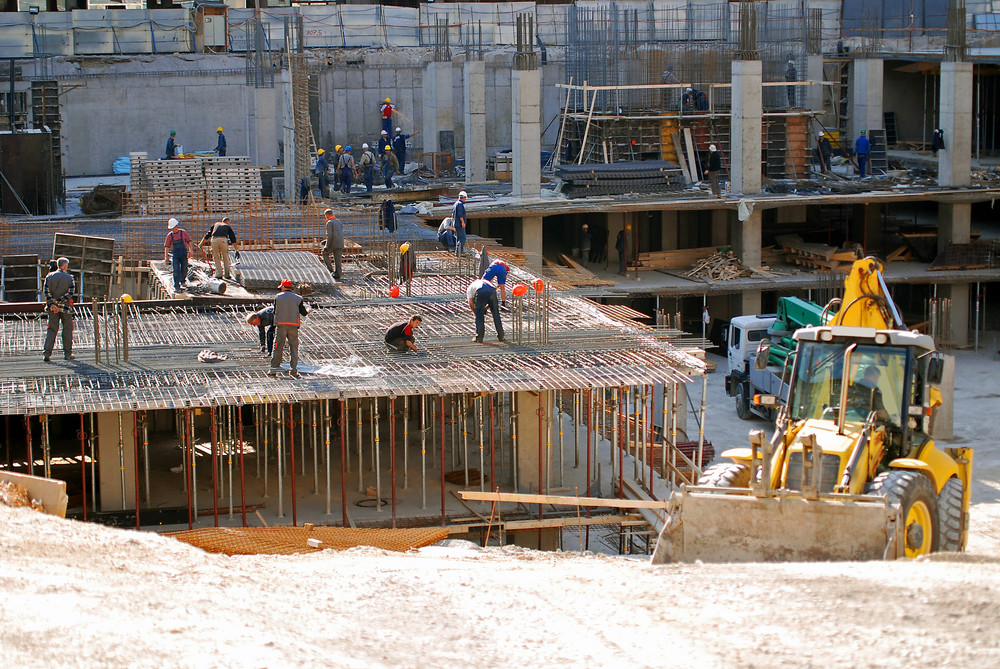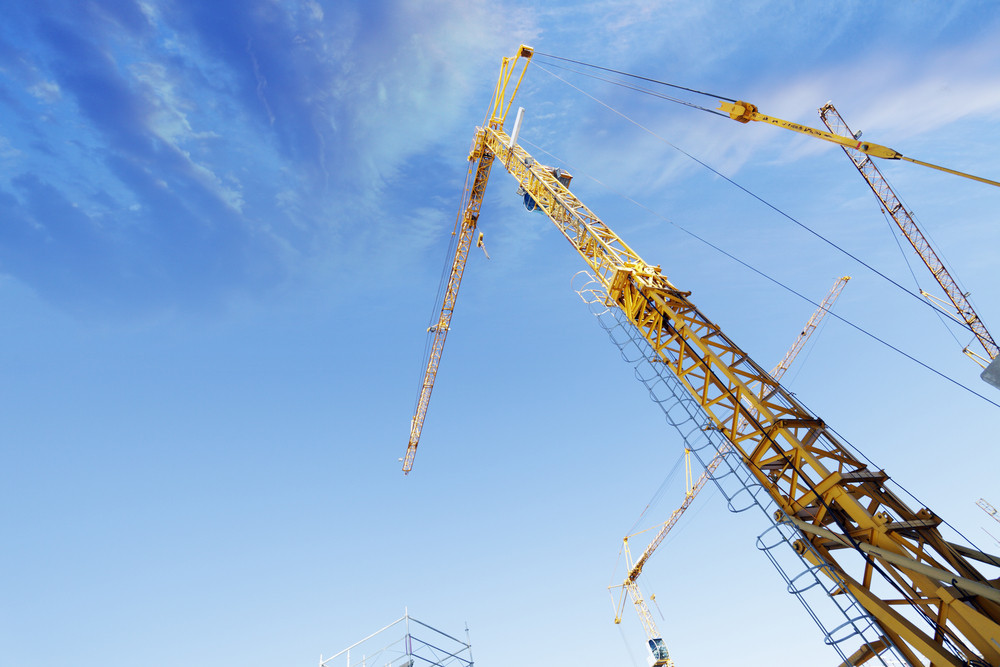Highlights
-
Understand your project’s scope and terrain
-
Know the different types of cranes and their capabilities
-
Factor in weight, height, and reach requirements
-
Consider transportation, setup, and permits
-
Work with a crane company that offers a wide variety of options
-
Verify safety, certifications, and operator qualifications
When planning a construction project—whether it’s a commercial build, industrial plant maintenance, or lifting heavy equipment—choosing the right crane can make or break your timeline and budget. With so many crane types, lifting capacities, and configurations, making the right choice requires a blend of technical knowledge, project-specific insight, and trusted professional advice. In this guide, we’ll walk you through the most important factors to consider when selecting a crane and help you avoid costly mistakes by aligning the right equipment with the job at hand.

Understand Your Project Requirements
Before exploring different crane options, start by clearly defining your project’s specific needs. This includes understanding the type of material being lifted, the weight of those loads, and how high or far they need to be moved. For example, lifting HVAC units onto a high-rise building requires different specifications than setting trusses for a residential home.
You’ll also want to assess the job site itself. Is the terrain flat or uneven? Is there limited space for crane setup or operation? Will the crane need to be mobile, or can it remain stationary for long periods? According to the Construction Industry Institute, proper planning and equipment selection can reduce project costs by up to 15%.
Know the Types of Cranes Available
Understanding the different types of cranes is essential to making an informed decision. Each crane has strengths and limitations depending on the nature of the work and the physical environment.
-
Mobile Cranes: These versatile cranes can be transported easily and are suitable for short-term jobs and tight spaces.
-
Tower Cranes: Ideal for high-rise construction, these cranes offer excellent height and lifting capacity.
-
Crawler Cranes: Built for heavy lifting and rough terrain, these are great for long-term projects on unstable ground.
-
Rough Terrain Cranes: Designed specifically for off-road job sites, these cranes are mounted on four large rubber tires.
-
All-Terrain Cranes: These combine the mobility of a truck crane with the off-road capabilities of a rough terrain crane.
The type of crane you choose must align with your site’s conditions and the demands of the lift. For an excellent technical breakdown, the U.S. Department of Labor’s OSHA guidelines provide insight into crane classifications and safety protocols.
Calculate Load Capacity and Reach
One of the most crucial aspects of crane selection is load capacity. This refers to the maximum weight a crane can safely lift under specific conditions. Underestimating the required capacity can lead to equipment failure or accidents, while overestimating may result in unnecessary costs.
Also consider the reach or boom length. Will the crane need to lift materials vertically, horizontally, or both? If you’re working in a city or near power lines, height restrictions may also come into play.
It’s helpful to review load charts, which detail the lifting capacity of cranes at various angles and boom extensions. These are usually provided by crane manufacturers and rental companies. Consulting a professional engineer or operator during this phase can help avoid costly errors.
Consider Transportation and Setup
Crane logistics often go overlooked until it’s too late. Larger cranes may require special permits for road travel or disassembly for transportation. Some cranes need hours—or even days—of setup time, which can affect your project timeline and budget.
You’ll also need to prepare the ground surface and ensure there’s enough space for setup and counterweights. For tight or indoor spaces, smaller mobile or spider cranes may be the best option. If you’re working near public roads or pedestrian areas, local ordinances or traffic control measures might also be necessary.
Choose a Company With a Wide Variety of Cranes
When renting or hiring a crane, always partner with a company that offers a broad range of crane types and capacities. This gives you the flexibility to choose the best machine for your project without being pushed into an ill-suited option due to inventory limitations.
A reliable crane company will:
-
Offer an on-site evaluation to recommend the right equipment
-
Maintain a diverse fleet that includes mobile, crawler, tower, and specialty cranes
-
Provide certified operators, riggers, and lift planners
-
Ensure their equipment meets OSHA safety regulations
By working with a company that has access to multiple crane types, you’ll have more control over pricing, safety, and scheduling. They’ll also be better equipped to adapt to unexpected changes during your project.

Don’t Overlook Permits and Safety
Many crane operations require permits, especially in urban areas or near highways. Failing to secure these ahead of time can lead to fines, delays, or unsafe working conditions.
Safety should also be top of mind. Make sure the crane company provides certified operators and follows OSHA and ASME (American Society of Mechanical Engineers) guidelines. Ask about recent inspections, maintenance records, and insurance coverage.
According to a study by the Center for Construction Research and Training, most crane-related fatalities occur due to contact with power lines, dropped loads, and boom collapses (CPWR). Proper training and oversight are critical to avoiding such incidents.
Budget and Duration Considerations
Crane rental pricing can vary widely based on:
-
Type of crane
-
Duration of rental
-
Operator inclusion
-
Setup and teardown time
-
Transportation fees
-
Permit and insurance costs
Get a detailed quote upfront and clarify whether your rental includes an operator, rigging equipment, and travel time. Daily and weekly rates may differ substantially, and some companies offer discounts for long-term rentals. Ask about overtime charges or penalties for delays to avoid surprises later.
Get Expert Advice When in Doubt
Choosing a crane is a high-stakes decision, especially for first-time project managers or general contractors. If you’re unsure about capacity, regulations, or site-specific factors, bring in a crane consultant or structural engineer early in the process.
Many crane rental companies will offer a no-obligation site walk to assess conditions and provide guidance. This input can save thousands of dollars in rework, delays, or equipment swaps later on.
Whether you’re planning a one-day lift or a months-long construction project, don’t guess when it comes to crane selection—get expert input to ensure safety, efficiency, and compliance from day one.
Selecting the right crane for your project involves more than just choosing the biggest or most affordable option. It requires careful planning, understanding the job site, and working with a crane company that provides a wide variety of options to meet your specific needs. By focusing on load capacity, site logistics, safety, and expert guidance, you’ll be well-positioned to execute a successful, on-time project with minimal risk.
If you’re preparing for a lift, now is the time to consult professionals, review your site requirements, and choose a crane that can do the job safely and efficiently. A thoughtful decision today can save you from costly mistakes tomorrow. From warehouse lifts to infrastructure work, each project brings its own challenges, and having the right crane is key to getting the job done safely and efficiently. With careful planning and the right support team, even the most complex lifts can be executed with confidence, precision, and peace of mind.
